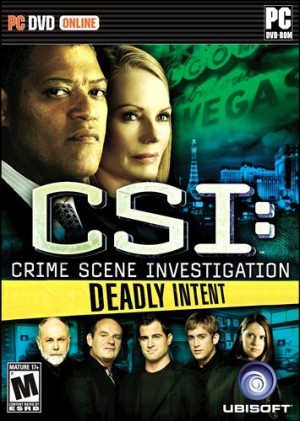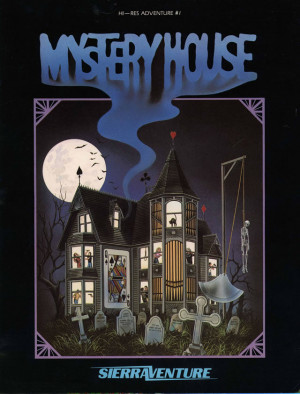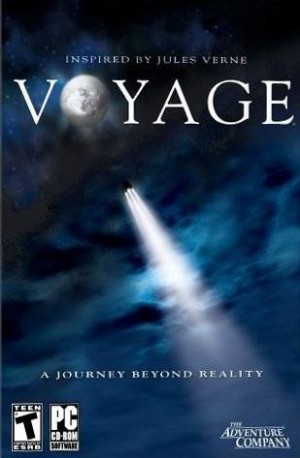Review for CSI: Deadly Intent

As another year rolls by, another game inevitably appears in the CSI franchise, the forensic-detective game based on the popular TV series. The latest is CSI: Deadly Intent, and developer Telltale Games are back at the helm for the new entry, after heading up 3 Dimensions of Murder and Hard Evidence (then missing a turn for the bizarre casual spin-off experiment CSI: NY). Could it be that Telltale have used the experience from their generally excellent episodic series to breathe some fresh life into a formulaic, repetitive franchise? Have they crafted a game which will delight CSI fans and adventure enthusiasts alike?
No. No they haven't. Unfortunately, Deadly Intent is crushingly turgid and boring, even for fans of the series. The odd element has been improved from its predecessors, but the vast majority remain the same, and some aspects have actually become worse this time around.
As always with this franchise, you play yourself as a rookie investigator partnered up with the cast of the show to solve five cases. Each case takes you to a different crime scene where you gather evidence, then to the morgue to talk to the coroner about the victim, and finally to the high-tech CSI lab where you process your findings using a selection of forensics machines: a spectrometer that lets you identify different chemicals, a fingerprint database, a microscope and so forth. As well as processing each, often evidence can be compared together; match the fingerprint on the murder weapon to that of a suspect, and a link is established in your case file. When you've made enough discoveries, you can approach the police chief to ask for a warrant, and bring suspects in for questioning or get permission to scour a new location for clues. Finally, you'll find the definitive evidence that links a suspect to the murder and be able to close the case as they own up to the whole story, confronted with your efforts.
In previous games, the last of the five cases has been cleverly linked with the previous four, a sort of meta-case which features key elements of the others. Here, the final episode only has the most tangential of links to something which happened earlier. As such, it's baffling that you can't play these five unrelated scenarios in any order you choose, but each case has to be unlocked in sequence. This wouldn't be a problem if they were all gripping mysteries, but the scenarios here are uniformly dull. Naturally, there is a bit of mystery introduced (the first suspect in the crosshairs, of course, is probably not the villain), but the situations themselves are fairly unimaginative. And although the dialogue and characters are perfectly functional, they simply aren't very interesting. Apparently there are only a few Vegas archetypes to choose from, as just about everyone here is in show business: pole dancers, ex-television hosts, a fire breather, and a prize fighter form the focus of the first four cases.
The fighter case is a little confused. The fighting league involved seems to be modelled on staged tournaments (the combatants wield katanas) but the case hinges around a match-fixing conspiracy. Did any of these people imagine the opponents would cut each other up for real? Would anyone take bets on something so evidently phony? The best of the bunch is that last case, which, if nothing else, does feature some engaging twists involving drag artists and a retired cop. The reveals are a little less predictable, the world feels deeper and the history more interesting. Overall, though, if you are hoping for the cheeky fun of 3 Dimensions’ self-parodying videogame case, you'll be sorely disappointed. If you’re hoping for a handful of forgettable murders (and it is always murders, as no other crimes exist in Las Vegas, it would seem) you are in luck. Expect to visit mostly typical boring locations: interiors of sleazy strip clubs, hotel rooms and so forth. There are one or two curveballs – a ring in the fighting tournament, for example – but by and large the locations are Vegas-as-usual.
I might be ready to forgive the lack of imagination shown in the choice of settings if each were lovingly rendered graphical showcases. Not a chance. In 2006, the first 3D game in the series already looked a bit creaky. But here we are, nearly four years later, and I can honestly assert that the graphics are worse. The characters were always a little unnatural – neither quite realistic nor stylised enough – but here the CSI team are all full members of the Uncanny Valley Residents' Committee, with each model a little more generic, the textures less detailed. There's also some horrible rendering of glass objects, laughable water effects and awkward animation (the cutscenes are particularly poor). It's an unsightly, unimmersive world to play in. Some of this may be down to the fact that the game is also releasing on the Nintendo Wii, but surely a scaled-down version could be released for less able hardware instead of lumping PC/Xbox 360 owners with dated graphics. The credits indicate that that some the graphical duties were outsourced to an animator-for-hire, which might further explain this visual step backwards.
As for the audio side of the presentation, at least this has remained fairly good. Returning players might be bored of hearing largely the same bits of music by now, but they're authentically reminiscent of the series. Also, most of the cast lend their voices to their dead-behind-the-eyes computerised counterparts, and the rest of the voice acting is once again acceptable to good. Being based on the show's ninth season, there's no Grissom or Sara to be found, but Laurence Fishburne pops up from time to time, lending a little of his famous gravitas.
Where improvements have been made, they're welcome, if hardly radical. There are new DNA and fingerprinting mini-puzzles, and even if they are incredibly easy, they almost make you feel like your efforts are necessary. The DNA comparison now involves a glorified jigsaw puzzle, matching coloured bases to try fitting two samples together. Fingerprint searches now require you to select points of comparison, but as this counts as any break in a ridge or whorl, the exercise constitutes nothing more than a bit of half-hearted clicking. The three most used pieces of equipment are the DNA, fingerprint, and chemical analysis machine. Unfortunately, this means some of the more interesting activities, like piecing together jigsaw puzzles on the workbench, or using different colours of light to read altered documents, don't crop up too much. There are still no actual “puzzles” in the game as such, though this isn’t necessarily a bad thing, as I doubt the CSI atmosphere would really suit inventory combinations or secret codes.
The one mechanic that is a real step forward occurs during suspect interviews. When a suspect makes a controversial statement, you can click on an icon and bring out one of up to five pieces of collected evidence to prove they've been lying. There's no real penalty for picking the wrong one, but it might affect your performance statistics (thoroughness, skill and cunning) which pop up at the end of the case. More importantly, choose wrong twice and your CSI partner will take you out into the corridor for a dressing down. It's a small step, but it does incentivise you to think about the case a bit. There's no proper spoken evaluation cutscene from the supervisor at the end, however, just a scrolling credits-style sequence which also shows a list of "awards" you received for challenges like achieving a certain percentage score in a case or performing a given action. There are optional "sidequest" bits of evidence to process for other CSIs, one extra item per case. These help unlock some of the achievem- sorry, "awards".
Another neat improvement is the increasingly complex and customisable help system. As well as still being able to ask your partner for hints and toggle on-off help options like evidence tagging (an indicator to show when evidence is fully processed), you also now receive periodic emails from another CSI nudging you in the right direction. If you're not stuck, there's no onus to consult them, but if you’re ever left without a clue, they're a nice option. However, the game is pretty easy, and can be completed in about four to six hours if you skip through the lengthier dialogues by reading the subtitles. The game autosaves assiduously, and there are manual save slots to boot, but other elements are a little too helpful, like the tutorial pages that pop up the first time you use a piece of lab equipment in each case. This happens even if you turn the tutorial option off and have already used the same machine to play through the previous cases. Sounds like a small gripe, but it happens with such frequency that it becomes rather infuriating.
In terms of controls, the game works as it always has – simple point-and-click panning around crime scenes, clicking to zoom into different camera angles, and selecting tools to process evidence. Here, however, the limitations of this system become even more apparent than in previous entries, with the camera gliding awkwardly to fixed spots. For example, at one point you search a suburban home. You can move through four different rooms, all with this nested zooming technique of click, pan in, click, pan in. In a single room, the system works, but moving through whole corridors or up steps is a little strange, and all it really does is emphasize the lack of free movement the game really deserves.
A few other minor changes have been implemented: the lab layout and some of the machines you use have been shuffled around, the toolbox (tweezers, powders, sprays and the like) looks different, and the dialogue system is icon-based instead of selecting exact lines of dialogue. These superficial changes don't make any difference to the core gameplay, as there is no change to the formula carried over from earlier games.
In summary, CSI: Deadly Intent is an entirely lacklustre game. The return to traditional form will please those put off by the casual surprise of last year, but even that enthusiasm won’t last for long. It’s becoming clear that the publisher, Ubisoft, just isn't willing to invest enough in this series to move beyond the status quo, and this latest installment can’t even trade blows with the highlights of earlier games. Both the originality of the cases and the production values have actively declined from previous entries, none of which have exactly been classics, even at their best. If you are a real CSI obsessive, particularly enjoy the game series, or are looking for some very slight detective work, you might eke some enjoyment from this title. Anyone wanting meatier stories and challenges will find this game less Deadly Intent, more deadly boring.





























